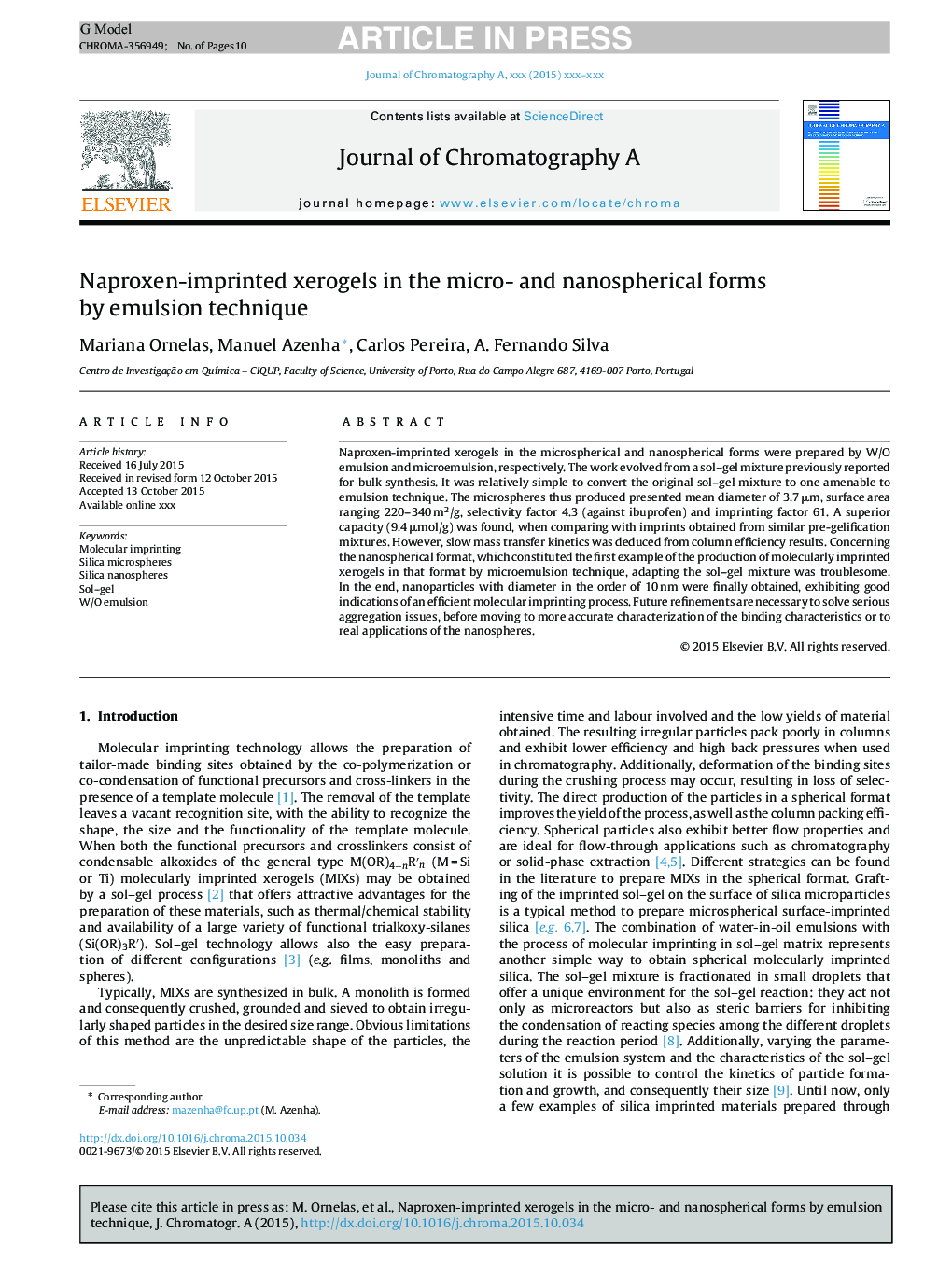| Article ID | Journal | Published Year | Pages | File Type |
|---|---|---|---|---|
| 7611021 | Journal of Chromatography A | 2015 | 10 Pages |
Abstract
Naproxen-imprinted xerogels in the microspherical and nanospherical forms were prepared by W/O emulsion and microemulsion, respectively. The work evolved from a sol-gel mixture previously reported for bulk synthesis. It was relatively simple to convert the original sol-gel mixture to one amenable to emulsion technique. The microspheres thus produced presented mean diameter of 3.7 μm, surface area ranging 220-340 m2/g, selectivity factor 4.3 (against ibuprofen) and imprinting factor 61. A superior capacity (9.4 μmol/g) was found, when comparing with imprints obtained from similar pre-gelification mixtures. However, slow mass transfer kinetics was deduced from column efficiency results. Concerning the nanospherical format, which constituted the first example of the production of molecularly imprinted xerogels in that format by microemulsion technique, adapting the sol-gel mixture was troublesome. In the end, nanoparticles with diameter in the order of 10 nm were finally obtained, exhibiting good indications of an efficient molecular imprinting process. Future refinements are necessary to solve serious aggregation issues, before moving to more accurate characterization of the binding characteristics or to real applications of the nanospheres.
Related Topics
Physical Sciences and Engineering
Chemistry
Analytical Chemistry
Authors
Mariana Ornelas, Manuel Azenha, Carlos Pereira, A. Fernando Silva,
